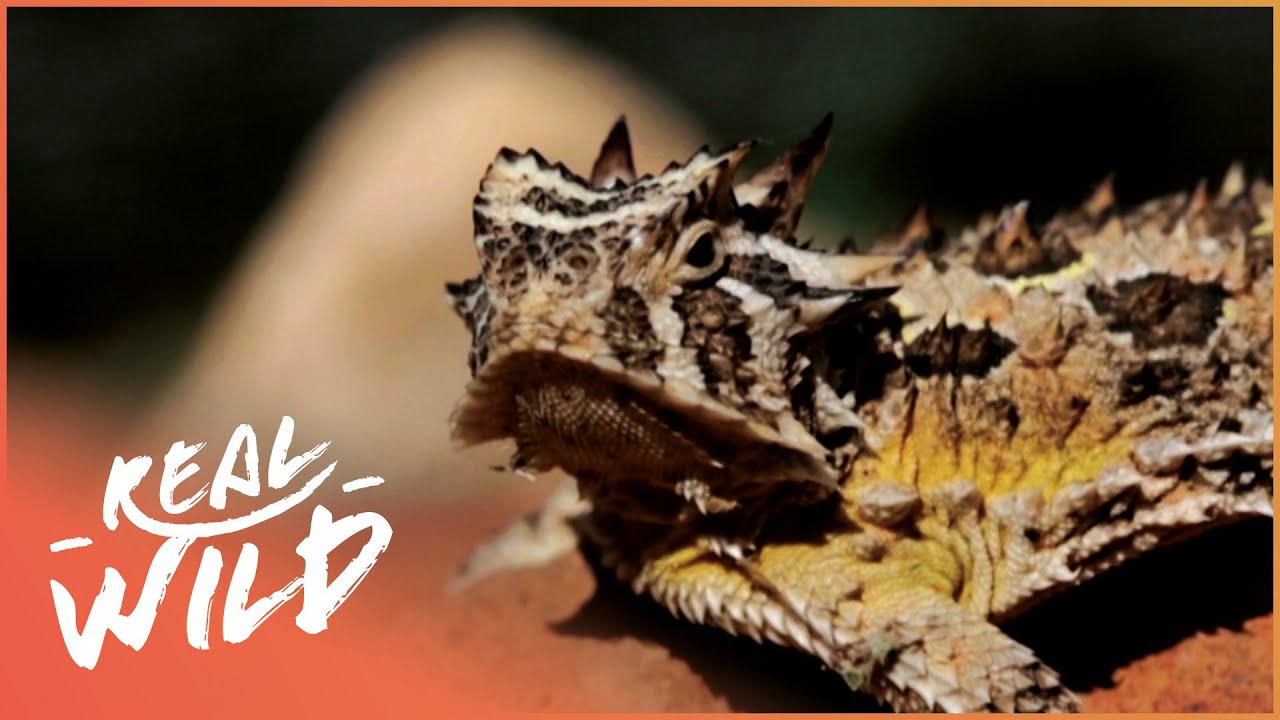West Texas’s Incredible Desert Wildlife [4K] | Expeditions With Patrick McMillan | Real Wild
I think most people my age know about the stereotype of west of the pecos you know what i’m talking about the one perpetuated by old movies a flat dry desert well this region is part of the chihuahuan desert eco region and what i typically refer to as america’s
Forgotten desert the chihuahuan is the second largest desert region in north america after the massive great basin and it’s much larger than the better known mojave or sonoran most of it lies across the border in mexico but it extends into southeastern arizona southern new mexico and here in west texas
We’ll begin our exploration of this incredible area in the dramatic davis mountains near alpine texas you just don’t expect to see prairie dogs here in trans-pecos texas but they’re here right in this beautiful little mountain basin grassland and these grasslands occur when we move up just a little bit in elevation above the
Desert and we have these fine textured soils that are perfect for growing grass but they’re also perfect for the burrowing of prairie dogs and it’s just amazing to think how these prairie dogs got here when we look at this from space we can actually see that this mountain basin of grass is isolated
By rocky slopes and desert on all sides very inhospitable habitat to black-tailed prairie dogs same prairie dogs we see in the northern great plains in large colonies and we think probably these prairie dogs migrated into these basin grasslands during times of cooler climate now we know that prairie dogs
Can travel pretty far but they have to be somewhat connected you can’t be isolated by 100 miles of an inhospitable desert so who knows how long these prairie dogs have been living right here in this one grassland well these grasslands are incredibly diverse they are a little bit different
From the grasslands that we see in the great plains some of the species are the same we have cytos grama we have blue grama we have hairy grama but they’re joined with many other species of grama grass there’s buffalo grass here but there’s also specialties of this region
These grasslands are far more diverse than the grasslands we see in the northern great plains and on the distance even pronghorn antelope pronghorns and prairie dogs in west texas it’s just incredible the diversity we see in one small region of one great state Do We actually moved uphill into this kind of wonderful chihuahuan grassland that still has a lot of characteristics of deserts to it we did that because it was getting pretty hot but even here as you rise up in elevation to four or five thousand feet the woody lilies are still
Everywhere lots of succulents even cactus so right where we’re at right now we have the three incredible groups of this high chihuahuan plain we have the bear grass nolinas the dazzlerians the sotols and of course yuccas soap tree yuccas and the incredibly stout and rigid tori’s yucca or spanish dagger
Those beautiful long filaments coming off the leaves we came up here because it’s getting really really hot in the mid 90s by about noon today and we came up here thinking we’d escape the heat but it turns out we might have escaped the heat anyway because what’s
Going on behind me is what happens this time of year the clouds are building and that’s because this is the monsoon season as the winds shift and the predominant patterns shift it starts to pull moisture out of the gulf of mexico and the gulf of california here in the west
Texas through the chihuahuan region and all the way over into the sonoran and it starts to rain july august september and you transform an incredibly parched dry landscape into a beautiful green landscape and so believe it or not we only have a few minutes i think before
Rain will overtake us and we’ll probably get about a 30 degree drop in temperature and when that happens here life blossoms and not just plants animals too i think this is uh one of the features of the desert southwest that a lot of people could do without and
I got to tell you i am terrified of spiders but i can’t help but to admire this incredible animal this is a tarantula and we are not in the desert i usually think of tarantulas as being a species that we find low in the desert but we’re up around 6000 feet elevation
And a really nice alligator juniper pinion woodland this is the largest spider that’s found in north america and huge fangs up on the front of this spider but i’m not so worried about it because unlike a black widow or a recluse spider this spider doesn’t have very potent venom
It’s large it has a lot of it but they’re very reluctant to bite a lot more frequently what’ll happen with this spider is you’ll see it actually use its back legs to spin little hairs off of its abdomen into the air and they irritate your eyes and make
Your eyes water those little irritating hairs are one of the defenses that this enormous spider has to keep it safe against a lot of things birds lizards all kinds of things will eat these but believe it or not as large as the spider is there is a wasp that is probably the
Main predator of this spider that’s just as large this huge wasp that actually specializes on feeding on these incredible spiders and why is it out around today because it rained this is a monsoon species we see them crossing roads in the desert at night and during the day after rains during the monsoon
Season and through the fall so we’re going to let him get on his way back out into the pin in juniper woodland to hunt more insects and out of the road the road causes a lot of mortality not just on tarantulas but on a lot of this really unique southwestern life
Here in the transition zone in the lower slopes of the davis mountains we’ve got a lot of the typical desert birds mixing with a lot of canyon and mountain birds and this morning is an incredible morning of birding right here in this little canyon for desert birds and
There’s no more typical bird that you think of for deserts than the road runner this large charismatic bird is related to cuckoos and we’ve been watching and listening to this male calling from the tree and from the rocks right up high on the tops of ridges advertising his
Territory and it’s hard to believe that that is a cuckoo but it is and it’s a ground dwelling most of the time cuckoo and it’s a runner for sure runs down lizards large insects pretty much anything it can catch is prey for a roadrunner an incredible animal typical of the desert but that’s
Not the only thing we’ve seen this morning all around us here one of the most charismatic and typical birds that you find whenever you have desert like habitat especially when you have choy a cactus is the cactus run and this bundle of sticks that we see packed into these
Densely spiny tall choya cactus that’s the nest of the cactus ren beautiful animal with a very distinctive voice that’s joined by a relative that lives on the rocks and the boulders here with this weird descending call that belongs to the canyon red add to that a sparrow a sparrow that’s actually pretty
Attractive with this bright black throat gives us its name black-throated sparrow that’s a species that’s in decline across much of its range but still very typical of desert scrub habitat an incredible morning of birding and it’s only the beginning of our day exploring the davis mountains The incredible davis mountains they’re so much more than most small sky islands that we’re used to seeing here in the southwestern united states this is a pretty serious mountain range and a lot of it is it pretty high elevations matter of fact mount livermore gets to over 8 000 feet
This huge area of high elevation provides a large habitat for oak pinion juniper woodlands similar to what we’re in right now it gets even more lush and more diverse as you go farther up slope in this woodland community and this is a place that’s full of surprises there are
More ferns here than in most places in the eastern united states just in this mountain range incredible forests incredible woodlands in the canyons and the slopes here in the davis mountains my favorite of the sky islands of the southwest there are very few plants in these hills
That are more important to people or at least we’re more important to people than this one right here this is an agave you’ve probably seen something like this at least if you’ve ever been to the desert southwest or if you’ve ever been say to a beach in florida because in the southeastern united
States we plant a relative of this plant agave americana agaves only flower once and can take 20 30 40 years to flower and then the whole plant dies and that’s one of the reasons why some of the common names for these species are things like century plant because it
Seems to take a hundred years for one to actually produce a bloom this species of agave is an endemic to just this region of texas this is agave havardiana and this one is the largest individual i know of anywhere these plants are covered with spines not just at the tip
Of the leaf but all along the margin incredible saw-like t-shirts/” target=”_blank”>teeth that are really hard and in fact there’s saponins and other chemicals here in the spine that cause a lot of pain if they become embedded in your skin this plant was one of the most important plants to the
Native peoples of mexico and the southwestern united states the plant was so important to the aztecs that one of the most important goddesses my well was portrayed as rising from the crown of the agave the group of native americans that were here prior to european colonization were called the mescalero apache
Mescalero refers to the fact that they were consuming mezcal this plant agave now this plant is useful for lots of things but it’s edible it’s a great source of starch it’s a great source of carbohydrates and it kept people healthy and alive for a long time but it has another quality too
That heart of the agave is so rich in carbohydrates and sugars that it ferments very easily the fermented wine from agave is called pulque and if you distill pulque you make mezcal and if you distill tool k in the town of tequila in mexico made from agave tekalana you get tequila
So a plant that was a source of alcoholic beverages a long time ago but also extremely important as a food crop important for the fibers and the leaves if you soak the leaves in water and beat the fleshy parts out at least behind a fiber that you can make shoes and
Clothing out of and today agave sicillana a relative of this agave havariana is still the most important fiber plant on earth for making rope cordage so an incredibly useful plant in the past incredibly useful still today and i just love them agaves these are the most cooperative scaled
Quail that i’ve ever come into contact with this is the quail you think of being in the southwestern united states they prefer this sort of semi-desert scrubby habitat that we’re in and normally i see these quail bolting away from me or running as fast as they can away from me through grasslands like
This it is abundant in this type of habitat these semi desert grasslands and even in just cactus scrub and desert proper and up into the mountains a little bit but not into the high high elevations we call these scaled quail because of that really beautiful pattern that’s really apparent on the chest of
The male up here where you can see the feathers of the breast are outlined with a dark ring so scale quail the old hunter’s name for this bird though oftentimes is cotton top because of that kind of whitish or buff-colored top-notch that these birds have not
Quite as extreme as a gamble’s quail or other desert southwest species but a really beautiful bird that i just feel fortunate to get this close to but it’s not the only quail here and the other one is even more bizarre Perhaps the most beautiful of all quail and certainly the most striking of u.s species is the montezuma quail it’s limited to this border region and perhaps most abundant right here in the trans-pecos this bird like so many species is dependent upon larger populations across the border in mexico for its long-term persistence here
You can’t overestimate the importance of a biologically porous border Well this is momo and momo is a javelina which we’ve seen in the early morning late afternoon screaming across the prairies and such up here but this is one of the charismatic and really characteristic species of the border region with mexico and though momo may
Look like a pig momo is not a pig matter of fact he’s not even in the same family he’s not related to pigs momo is a javelina and javelinas are their own lineage it’s uniquely american and really invaded north america from the south javelinas are found in the border region
Of the united states from south texas all the way through into arizona and javelinas depend on a poorest connection with our southern neighbor with mexico really for their long-term survival this is an animal that’s found all throughout central america down into south america for the group of javelinas and
An animal that we really owe to that connection that porous connection with mexico really cool first ever pet javelina i’ve encountered West texas is a reptile lover’s dream perhaps no other reptile here is as recognizable as the texas horned lizard this slow and shy lizard eats ants but has become increasingly rare in recent years and today it’s considered a protected species the diversity of snakes here is daunting many are
Harmless and non-venomous however texas is probably most renowned for rattlesnakes as the evening approaches the first to move out of their daytime retreats and across roads is the black-tailed rattler a rather docile and large species which is a good thing as its venom is extremely dangerous being a cocktail of
Hematoxin and neurotoxin and that makes treatment very difficult as darkness falls we encounter one of the iconic species of the american west southwest texas is one of my favorite places to come to look for rattlesnakes and it’s because there’s a lot of them here not just a good diversity we have
About five species that can regularly be encountered here in this part of texas but it’s also the sheer numbers especially at this time of year during the monsoon season and what we see with rattlesnakes is shifts in diurnal movements in other words are they active during the day are they active during
The night or right at dusk and we also see seasonal shifts in their activity and at this time of year these snakes like this beautiful small but gorgeous western diamondback rattlesnake become extremely active again they’ve been active in the spring and then a lot of these snake species
Will go through a period of more or less dormancy during the heat of the summer and then when it starts to cool off with all the rains that we get they start to become active again and this time of year when we have temperatures up in the
90s or 100 110 degrees even sometimes during the day in early august most of their activity is right at dusk or at night and we have three very similar species of snakes here the prairie rattlesnake the mojave rattlesnake and the western diamondback and the surefire way to tell the difference means you
Have to be kind of close because it’s these stripes that run down from his eye here he has this dark stripe that’s bordered by white and the angle of that stripe coming down from his eye is really sharp a prairie rattlesnake and a mojave are going to have stripes that
Run more horizontal along the edge of the head now you know you can’t age a rattlesnake based on the number of rattles but he’s adding a rattle every single time he sheds and when you look at the rattles the number of rattles that are on this snake it’s easy to see
That this incredibly long rattle belongs to a snake that’s not just a couple years old he’s probably five or six years old the western diamondback an incredible and really just the typical rattlesnake that you think of when you think of the west and this little guy obviously ferocious one of my three feet
Away he hasn’t rattled he hasn’t tried to strike me he’s not out to get me it’s docile it’s really just trying to hide in hopes that i go away and that’s exactly what i’m gonna do because even though i love western diamondbacks this is a really widespread snake you
Find it all over the southwest and in this part of texas we find some snakes that you have to come here to see some of my favorite rattlesnakes are right here around us in these hills so this snake is quite possibly the most dangerous snake
In all of north america one of the most dangerous in the world lurking in the shadows here in the middle of the road is a mojave rattler and what makes the snake so incredibly dangerous is the fact that this snake has in this area and in many areas both hemotoxins and
Neurotoxins and he is not like that diamondback at all and definitely not like a black tail this snake is fast and he will strike this is pretty typical for what i see with mojave rattlesnakes is that they are pretty bad customers and again you might confuse this snake with a
Diamondback but if you look at the pattern they’re not quite diamonds they’re more just like crossbands across the back and take a look at the eye there look at the stripe coming down from the eye it’s not nearly so sharp an angle it runs more elongate along the
Edge of the head and look at the tail look at the width of the white bands versus the narrow black bands very different than what we see in the diamondback and of course the size this is a relatively small species of rattlesnake but this animal does have
The potential to be lethal it is very dangerous i’m staying four or five feet away from this snake and he is giving me an amazing amount of warning he’s puffing up he’s displaying he’s rattling he’s doing everything he can just to get me to leave him alone and really that’s
All they want we’ve seen three mojave rattlesnakes now and only one of them has been alive the other two squished flat in the road and so i’m gonna respect this guy and i’m gonna do what’s right i’m gonna move him over to the side of the road where he was headed
Give him the respect he deserves and thank goodness at least one mojave made it across the road tonight six species of rattlesnake call the trans-pecos home aside from the four larger species we encountered on the road there are two dwarfs the desert massasauga and the incredibly variable and beautiful
Mottled rock rattler you might find it surprising that we don’t know exactly how many species of dwarf rattlesnakes they really are in the desert southwest we’re still learning the striking banded rock rattler from new mexico and arizona is considered by some to be the same species as the modeled rock rattler that
We have here despite the fact they have different markings and each population is confined to mountainous isolated areas that rise above the desert meaning each population is stuck where it is and has been for some time this has allowed them to each adapt and change to their local conditions
Student brett welch and professor martin terry have been trying to figure out just how isolated and just how different these populations are and if there’s one two or many species these two rattlesnakes are a member of the lepidus family there’s four subspecies this one is incredible slept in celephas that’s the model rock
Rattler which is native to west texas this green and gold one that’s the banded rock rattlesnake the one that’s native to texas tends to be white and silver this is from new mexico these are the ones that you find on the u.s side of the border the other two are
Exclusively mexican they are subspecies currently and my task has been trying to prove them out to be a true species of one another and essentially when we started out we were working with morphology which is the physical characteristics that you see on them and unfortunately there’s just too many variables even in one
Mountain range so we went to the next step which is using acoustic variables which is a rattle and it turns out that there’s a tremendous difference of speed between the two subspecies that we have on the united states side lepidus lepidus has a slower rattle speed at about 160
Megahertz clobber i can generate all the way up to 260 and it’s very consistent we did over 69 different mountain ranges from texas all the way into arizona and club ride really blew the doors off it’s a very fast paced snake with lapidus lepidus the one that’s native here
It takes a great deal of effort to get them to rattle the only way i can find them out here is i have to typically uh hunt them at night or walk the road cuts and stuff like that they don’t rattle so it’s strictly visual on clobberide you literally have to stomp
Around in talus slopes and they’ll give off a very fast high-pitched audible buzz and that’s the only way you’re going to find that snake 99 of the time clobs just won’t be on the surface where you can see them so behavior-wise one’s extremely nervous that would be the banded rock they
Rattle almost immediately with any kind of vibration that comes into the talus lepidus as you can see with this little girl they don’t seem to rattle too much people do underestimate the bites on these because of the size of them people often think they have to be a large
Snake to inject a large amount of venom etc well what it turns out that a lot of these snakes especially in the southern populations there’s very few lizard species that actually survive the summer hardly no rodents at all so the venom has evolved into taking on things like cicadas and centipedes and unfortunately
Each other so basically what’s happening is the northern populations of clobbering lepidus where they have lots of mice the venom doesn’t have to be as potent when they get down around the southern ranges it’s extremely potent it’s a high neurotoxin and it can quite literally shut a human heart down in seven minutes
It’s it’s that bad unfortunately i’ve been bit and we had some very quick reactions to neurotoxins and uh yeah within seven minutes i was unconscious i was still breathing but it knocked me out quickly so it appears that there may be at least two species distinguished by pattern rattle and perhaps also venom
Each of these isolated populations has the potential to be recognized as distinct the diversity here is mind-boggling and we’ve only scratched the surface of the stunning life that makes its home here join me next time as i continue to explore the incredible trans-pecos Change is an integral part of the world and let’s face it the world’s getting a little riskier climate is volatile and here at the south carolina botanical garden we seek out plants from regions of the world that can handle that yeah this around me is south carolina but it’s filled with
Plants from one of the habitats that has the most volatility in north america the chihuahuan desert join me on today’s expedition as we continue to explore the trans-pecos a land marked with change The big bend can be a pretty brutal place i mean it’s hot here in the summertime today right now it’s about 109 degrees it’s hard to believe that anything can survive here let alone thrive and in fact this is one of america’s great centers of diversity especially for
Plants that are super well adapted to living in places that are really dry for long periods of time and there’s no better example of that than the plant that’s right in front of me here cactus right and cacti like this one are superbly adapted for growing in places
Where water can’t be depended on because they store it in their stems cactus don’t have true leaves these things on this prickly pear that look like a leaf are actually a stem and each one of those little dots that have all the spines coming out from them the aerials
Those are actually where the leaves would be produced if this plant produced leaves this one has instead of leaves just the modified petiole the base to the leaf which is a spine and then all these little glock heads down at the base of the spines little irritating hairs well protected and well adapted
To living here storing water in its above ground tissues this plant though is incredibly spiny and we see adaptations among the cactus that grow at the lowest elevations the hottest places for dealing with that and one way to deal with it is to disrupt the amount
Of light that gets onto your pad that hits you by having lots of spines another species here one of my favorite ones the clock face cactus has stems that actually have little felty gray pubescence almost like peach fuzz on the sides of the pads that helps to hold
Moisture in reflect light and really increase the boundary layer to sort of ameliorate the impact of all the heat texas has more species of cacti than any other state the big bend region of texas has the highest diversity and a lot of these species are only found here this one
Is a puntia arya spina and when it comes to cactus with really restricted small ranges there’s not many better than this one this one is found just right here in the limestone of the canyons that run along the rio grande river and only for a mile
Or so north of the rio grande and it’s not alone there are no fewer than six species of cactus that are found only here in big bend national park many of those are restricted to one small area so why so many species right here well
Most of it has to do with what’s going on right over there that’s mexico this place the bokias basin right along the rio grande river is the lowest part of the entire chihuahuan desert eco region that means it’s the hottest in the summer time but it also means that it’s
The warmest in the winter time you see many species of cacti are cold sensitive certainly not all of them they grow all the way up in northern canada for some species but the majority of them are cold sensitive and here it stays warm enough in the wintertime even during
Climate shifts that these things can survive so if you think about past ice ages and their impacts on vegetation across the continent some places like this we’re sheltered and protected enough to keep plants like this alive during climate change so that’s one of the reasons why there’s so
Many species here that connection with mexico has meant that a lot of things have been able to establish and survive past change here the chihuahuan desert region is home to more cacti than any other region of comparable size in north america here in the trans-pecos alone there are
76 distinct species and 33 sub-specific varieties flowering time is generally before the rains start in the spring cacti have some of the most beautiful and gaudy flowers on the planet and the trans-pecos comes alive with color from the earliest spring through early summer if you’re flowering during the dry
Season and in a desert where water is really scarce you would think that you wouldn’t want to produce a monstrous flower of thin petals that lose massive amounts of water but cactus do exactly this they do this to make sure that they are noticed by pollinators but the trade-off is
Most cactus flowers open for only a few hours and on one day only this helps to reduce water loss and the monstrous flowers ensure that a passing bee couldn’t possibly miss you if the flowers do open for more than a single day they often change color on
The second like this border prickly pear and the grassland prickly pear there’s also a great amount of variation in flower color within a single species like this example in the plains prickly pear the rainbow cacti get their names from the stems which are banded with color not the distinct upright flowers which
Are not quite as showy as others sometimes the plants themselves outshine the flowers and this is the case for the purple prickly pear it colors up bright purple when stressed the variety of color shape and sheer diversity of species here is stunning Prickly pears aren’t just diverse and really cool plants here in west texas they’re incredibly useful they’re useful to man and they’re useful the wildlife if you’re ever out lost in the desert there’s not a better resource for food and moisture than the prickly pear now
You can’t cut open a prickly pear or any other cactus and expect to find a bucket of water on the inside but if you happen to be here at a time of the year when the fruits are ripe right now in the monsoon season you’re in for a real
Delight because this is why they’re called prickly pears the fruits are entirely edible and on most of these species that have reddish colored flesh they’re extremely sweet these things at least the red pulp ones the ones that are red on the inside contain this incredibly sweet fleshy inside that
Tastes like a mixture of kiwi and strawberry a little tart a little sweet and not just the fruit is edible but the pads themselves are edible once you remove the spines and these incredibly irritating little hairs what we call glockens you can slice the pad eat it
Fresh eat it pickled fry it the whole thing is edible as latino populations rise in the united states you might have noticed that prickly pear pads and fruits have started to appear in your local grocery store that’s because they’re great food prickly pears however are really economically important for
More than just a food resource they’re economically important because of an insect that lives on them and feeds on them the cochineal scale insect that’s where a lot of the red food coloring that’s used in foods and dyes that are used in clothing comes from and when you
Start to think about how important these plants are to man and to wildlife it might change your perception of the nasty old prickly pear in a land of such dryness tiny differences in elevation aspect exposure or rock can greatly influence moisture and thus the vegetation changes in geology can also dramatically
Influence the plants the minerals and ph of different rocks create habitats which allow for specialists one of the most diverse desert habitats occurs on limestone these hills of sedimentary rock in presidio county are one of my favorite places to visit because the cacti that are here but there’s also a very famous
Oak found in these hills the hinckley oak is famous because it’s tiny and it’s extremely rare only a handful of locations of just tiny little dwarf oaks and one of them is right up above us here historic droughts that have hit this region in recent years have caused
A massive decline in most of these small relic populations and the future of the hinckley oak is really kind of up in the air this is a species that was already pushed to the limit and changes in climate here threaten to push it over the edge but it’s not just the oak that
You would come here to see if you’re a plant nerd like me it’s the cacti and one of my favorite one of the most bizarre is right here it’s hardly recognizable as a cactus in fact it looks more like a living stone the common name for this is the living
Stone cactus and it is perfectly adapted for living in this incredibly harsh environment that it lives in because most of this plant is actually underground it’s got a large underground storage organ a tuberous base that goes down into this dry rocky soil that stores a lot of water and the above
Ground part is sheltered because it’s so close to the ground and it blends in perfectly here in this rocky habitat until it produces a beautiful pink flower but you know what this is a really neat plant but there’s a far more famous cactus that’s found here in these
Limestone hills in this region dr martin terry is the president of the cactus conservation institute this organization is dedicated to the study and preservation of vulnerable cacti one in particular is the reason we’re here the most mystical of all cacti you won’t see me get much more excited
Over visiting a plant site than the one i’m at right now this is an incredible limestone habitat with tons of cactus but one of the most special cactus in the world is right here and this is peyote the famous peyote and it’s unusual it has some things about it that are different from
Ordinary cacti most cacti defend themselves with spines this plant it’s got a typical cactus sort of form but instead of having spines it has these little hairs see they’re not prickly at all they’re just soft hairs and instead of having a rather hard exterior maybe you can tell that i’m
Punching in on the soft body of this cactus very unusual non-cactus-like this plant is growing in what you’ll see is limestone soil this all these rocks here are limestone and it doesn’t like to be in full sun all day long i notice they’re almost all of them are bent
Eastward they’re all facing the same direction yes thereby it’s catching the cool morning sun and avoiding the hot afternoon sun right because it’s in the shade of this rock in the afternoon it’s got a little porch here to catch shade exactly yeah and this plant is uh is so
Well known because of the chemicals are in this plant yes peyote defends itself chemically by creating what to people are psychoactive compounds what to other animals are bitter tasting bad substances that they won’t want to eat it is legal for native americans to utilize this plant for the psychoactive alkaloids which are
Conducive to a proper religious state the chemicals in it promote a feeling of reverence a feeling of contemplation and they utilize that effect of this plant as the sort of center of their religious ceremonies unless you’re native american and have the papers to prove it digging this cactus up is a felony even
Possessing it is a felony so the organization that you’re the president of is a very focused on conservation of not just peyote but all these vulnerable species absolutely the cactus conservation institute of which i am president is striving to protect vulnerable species of cacti and
This is near the top of our list because it is utilized by humans and has been for at least 6 000 years dating techniques have shown us that but uh it’s it’s now become over exploited it’s over utilized and the the amount of habitat that’s producing these
Peyote plants in the united states is very limited in fact it’s limited to four counties in south texas and there’s a few isolated populations in west texas we do scientific studies on this plant looking very carefully and scientifically at the effects of harvesting on this plant the crown is the part
That’s utilized ceremonially by the native american church it turns out that harvesting just the crown just the above ground green soft part that contains all the alkaloids that’s the best way to harvest it and we’re looking at its capacity for regrowth we’re quantitating that and hoping that some of what we
Find out scientifically will be translatable into for instance affecting the behavior of the harvesters of peyote if we can if we can let them know the consequences of their behavior the way they harvest the technique they use then i think we will have accomplished what we set out to
West texas is the epicenter of cactus diversity for the united states you can come here and see so many incredible species and it’s so tempting for people when they’re out here to say i want one of those on my windowsill at home but there are several cacti here that are
Protected by federal law because they are listed species so be aware you know when you come enjoy it it’s one of the best places on this planet but also be thoughtful and considerate that we want people to enjoy this place for many generations one of the most unusual geological
Formations in the trans-pecos is also one of the most difficult to visit we’ve been afforded an incredible opportunity by ranchers ike and sally roberts to visit a habitat that shelters more critically endangered cacti than any other ike sally and martin have brought me to this incredible place that very few
People get a chance to see because it’s not public access it’s a private land holding and this site is an evacuate baron this incredible rock is what we call navaculite and it absolutely is outcropped everywhere on this hill and it’s a very peculiar rock that’s only found in a few places in the
World it’s what we would term a microcrystalline quartz it’s mostly silica and it’s extremely rare it was laid down here during the devonian period around 270 million years ago and you find it in places like arkansas and the ouachita mountains and here in the area that we call the marathon uplift
Around marathon texas and these rocks you’ve probably seen before because arkansas stone that’s used for a wet stone to sharpen knives that’s navaculite so an incredibly cool rock and it provides an extremely nutrient poor situation a very shallow soil for plants to grow on but it turns out that
Nevaculite is the place where you find some of the rarest and most peculiar smallest cacti in north america the tiny crevices in the navaculight between tufts of spike moss harbor several dwarf species of cacti found nowhere else on the planet like nellie’s pincushion cactus and the similar hester’s pincushion cactus tiny cacti
With huge flowers the hester’s isn’t just restricted to novaculite but is a specialist of this basin the corel’s hedgehog cactus is another basin endemic and the strange wenitcher’s hedgehog cactus is found on only nevaculite here it looks just like cousin it when it’s a juvenile nevaculite also occurs on the solitario
Dome in neighboring presidio county and this is the only place graybeard cactus can be found it’s amazing just how many species are limited to this peculiar rock there’s spiny and then there’s this plant this thing is incredible this is a puntia spinosa baca and spinoza baca
Means spiny fruited and when you look at this plant’s fruit my goodness even the fruit is covered with these incredibly horrible spines i mean these things are as sharp as needles and rigid beautiful in shape and structure though and the way the light shines through these dark reddish brown spines the
Reason i wanted to show you this plant is not just that it’s really rare it’s only found right here in big bend national park on limestone in the low desert the interesting thing about this plant is it’s a polyploid polyploid means it has more than a normal number
Of chromosomes you and i were diploid that means we have two sets of chromosomes one from our dad one from our mom and this plant has four well it’s not just that this plant has four sets of chromosomes but it’s also that we have a pretty good idea where
This plant came from you see one of the ways plants can form new species is through polyploid speciation events and this plant appears a little bit like the golden spine prickly pear that we saw back at the river and it also looks a little bit like the comanche prickly pear
And it turns out that those two plants may indeed be the parents of this plant so how does this happen well it starts with a mistake all egg and sperm cells are produced by splitting in half the chromosomes of the parental cell one way this can go wrong is if this
Simply doesn’t happen and the cell doesn’t divide and it produces an egg with twice as many chromosomes as it should have if a second plant produces a pollen grain that also has the same mistake and they get together voila you produce a tetraploid twice as many chromosomes as the parents
So chromosome doubling is a great way to form new species because you and i both learned in elementary school what a species is the most commonly used definition is the biological species concept which says that a plant is a species if it cannot breed with any other species well if your parent
Species of a hybridization event happens to be diploid and you happen to be tetraploid there’s no way that you can cross back to your parent you see when you have the four sets of chromosomes to form an egg cell that leaves you two and when you have two
It leaves you one and three just doesn’t combine into an even number it doesn’t break apart properly during meiosis so any hybrid that would be formed between a polyploid hybrid and its parents would be functionally sterile it couldn’t set fruit so hybridization through polyploidy means that that individual is now isolated
From both of the parent plants and is on its own trajectory it’s already its own species so here is an example a fantastic example of a plant that’s in between two others but has started to go its own way has a different architecture a different form and a slightly
Different habitat a little bit removed from the river to become this incredibly spiny crazy prickly pear that’s before me a punta spinosa baca it’s actually a really interesting concept and it turns out that a lot of plants on this planet may have arisen through polyploid speciation events just like this
It’s hard to imagine a hotter drier place than the low chihuahuan desert the thing is it may be getting hotter and drier just in the past couple decades incredible change has happened especially here at low elevations in places like big bend national park all this is dead lachughia agave lechuguilla one
Of the signature plants of the chihuahuan desert and it used to absolutely cover this desert with its dark green gloss and today finding live lechuguillas is a lot harder than finding dead lucha gears huge vast areas of this desert are covered with dead material not just lechuguillas but even some creosote bush
And quite a few cacti even the clock faced cacti one of those signature species of the chihuahuan low desert it has been extremely dry here much drier than normal and when you think about the amount of time it takes in agave one of these plants to grow into a
Large clump like this you’re talking hundreds maybe thousands of years and all this has been undone by drought and heat in the past couple decades in a place that really is adapted for drought and heat but if this much change is going on down here what’s going on up there The dramatic chisos mountains rise directly out of the hot chihuahuan desert and you change very abruptly when you come up to higher elevations here from that dry desert into a rather moist cool forest and this tiny little island of moist habitat that exists at high elevations is home to species you can
Find nowhere else in north america and this one is one of the best examples this little endangered tree which is really quite common here in these oak juniper pinion woodlands is a juniper and the drooping branches give it its common name this is drooping juniper
It’s a plant that when i was a kid i saw in the trees of north america book the little audubon book always wanted to see in real life and i had to come here to see it for the first time really a spectacular plant and it’s not alone in
Being something that is found only here in the chisos mountains for the united states a lot of these plants like the drooping juniper are normally found farther to the south in mexico and in the u.s they make their only appearance right here right along the border the pines here we have mexican pinyon
Pinus sembroides there’s even an oak named after the mountains the chisos oak that’s a common red oak in some of the most music the most moist forest that we have here and it’s not all plants the little kalima warbler makes its only home in the u.s right here if you’re
Working on that bird list and you want to get all the warblers in north america you have to visit big bend national park to get that kolima warbler and it only spends a few weeks here in the mountains during the breeding season from late march early april on into the early and
Late summer but by this time of year by the monsoon it’s already long gone well it’s not just species that are only found here in the united states some things are only found here period one of the common cacti here at higher elevations is the chisos prickly pear with extremely long yellow spines
Beautiful light cream colored flowers that fade to peachy color on their second day it’s one of the most beautiful the prickly pears and where’s it found only here upper elevations along the chisos mountains incredible to see life so diverse here on such a small little island of moist cool forest
It’s hard to miss all the racket in these oak forests up here in the chisel mountains um two species down here that are really kind of chasing one another off uh sort of arguing over acorns because that’s an incredibly important crop up here for some of the largest and
Most raucous birds so we’ve been watching family groups of acorn woodpeckers actually gathering acorns and storing them up on the cliff face and then these big family groups of mexican jays come in and push them out mexican jays essentially kind of replace scrub jays up here in the chisos mountains and
That’s a specialty for here if you want to see mexican jays these beautiful big raucous bright blue and gray colored chase you need to come here to the chisos mountains just amazing that so much life could be concentrated in such a small little relic of the past in these cool forests
The vagaries of climate the warming the drying and the cooling the unpredictability is having a massive impact on the chihuahuan desert below us but you have to think about what those impacts are going to be up here in these opinion juniper woodlands of the jesus mountains these forests and the creatures that
Live in them are already at the upper limit of what they can tolerate you see as the desert moves up the slope the woodland simply has no place to go but right off the top of the mountain and with it got things like the kolima warblers and the drooping junipers
This place is the way it is because of the changes that happened here in the past and only time will tell what the future holds for places like trans-pecos if you ever get the chance to visit i hope you appreciate the diversity and vastness of this land as much as i do
I’m patrick mcmillan wishing you your own exciting expedition You
New Texas Republic | Featured Products
-
Blouse, Daily Deals, Gifts, Tops, Womens
Bow Tie Flutter Sleeve Solid Ruffle Trim Blouse
$19.23 – $19.61Select options This product has multiple variants. The options may be chosen on the product pageQuick View -
Blouse, Daily Deals, Gifts, Tops, Womens
Solid Color Pleated Loose Ruffle Hem Lantern Sleeve Off Shoulder Blouse
$22.06 – $23.63Select options This product has multiple variants. The options may be chosen on the product pageQuick View -
Jumpsuit
Sweet Retro Solid Color Casual Bow One-Shoulder Jumpsuit
$19.11 – $23.59Select options This product has multiple variants. The options may be chosen on the product pageQuick View -
Blouse, Daily Deals, Gifts, Tops, Womens
Solid Color Beaded Round Neck Puff Ruffled Short Sleeve Blouse
$24.03 – $30.61Select options This product has multiple variants. The options may be chosen on the product pageQuick View -
Bikini, Swimsuits, Womens
Solid Color Shoulder Sleeve High Waist Lace-up Shorts Separates Swimsuit
$26.69 – $31.71Select options This product has multiple variants. The options may be chosen on the product pageQuick View -
Daily Deals, Gifts, Skirts, Womens
Women’s Denim Ruffle Hem Knot Maxi Skirt
Original price was: $39.99.$24.99Current price is: $24.99.Select options This product has multiple variants. The options may be chosen on the product pageQuick View -
Daily Deals, Skirts, Womens
High Waist Stretch Denim Knee Length Skirt
$32.71 – $36.31Select options This product has multiple variants. The options may be chosen on the product pageQuick View -
Denim, Jumpsuit
Lace Spaghetti Straps Solid Color V Neck Sleeveless Jumpsuit
$29.08 – $31.51Select options This product has multiple variants. The options may be chosen on the product pageQuick View
























Leave a Reply
You must be logged in to post a comment.